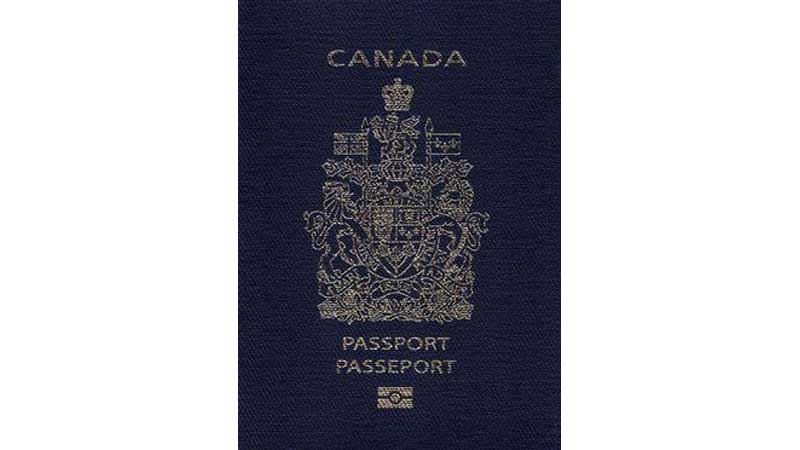🇨🇦🍁 New Rules for Canadians Need to Visit Europe in 2025 🛩️🧳
Monday, 06 January 2025 08:00.AM
What Do Canadians Need to Visit Europe?
Canadian citizens are not required to have a Schengen visa to enter a number of European countries for stays up to 90 days. This means that Canadian citizens traveling to Europe for up to 90 days just need to show their passports to immigration authorities upon arrival.
The Schengen zone is made up of European Union countries like Belgium, France, Germany, Italy, and Spain, as well as 4 non-European Union countries: Iceland, Liechtenstein, Norway, and Switzerland.
Starting mid-2025, there will be another necessary requirement for Canadian travelers—an approved visa waiver through the European Travel Information and Authorisation System (ETIAS). ETIAS is an electronic visa waiver that will pre-screen non-EU citizens who do not need a visa for short trips to the Schengen Area. Canadian passport holders must obtain travel authorization before traveling to a European destination.
ETIAS will help identify potential security threats and make Europe safer for residents and travelers. The ETIAS system has received support from all the EU member countries.
The information provided by applicants when applying for the ETIAS from Canada will be checked against several information security databases, including EURODAC, the Schengen Information System (SIS), and the Visa Information System (VIS), which are all managed by EU-LISA, the EU agency is also responsible for the implementation of ETIAS.
Traveling to Europe with ETIAS from Canada
Canadians visiting Europe with the ETIAS will be granted unlimited entries to the Schengen zone for a total stay of 90 days within every 180-day period. It is valid for a total of 3 years from the date of approval. This means there is no need to apply for an ETIAS before every trip to the Schengen Area.
Eligible applicants can complete the simple online application in around 20 minutes, by providing personal and passport information, and answering a few security-related questions, to receive an ETIAS for Canada electronically linked to their passport.
ETIAS Requirement for Canadian Citizens Entering Europe
There are several requirements for Canadian citizens planning to travel to Europe with ETIAS. To submit an ETIAS application, Canadian nationals will need:
• A valid Canadian passport
• A valid credit card or debit card to pay the ETIAS fee from Canada
• A current email address to which the approved ETIAS will be sent
The above documents are required to be able to apply for an ETIAS visa waiver. During the ETIAS application process, applicants must use the same passport they will later use to travel to the Schengen Area. This is because the European visa waiver is electronically linked to an individual passport. Canadian citizens with dual nationality should keep this in mind.
As the visa waiver for Europe is electronically linked to a specific passport, it will not be mandatory to print a copy of the approved ETIAS: travelers will simply be able to present the passport to transport carriers and at Schengen border control. Travelers are advised to print a copy of the ETIAS confirmation.
Traveling to Europe from Canada
An ETIAS can be refused if the information provided on the application does not match the details of the traveler’s passport. To avoid this, it is important for Canadian travelers to make sure all the data on the form is accurate and free from errors before submitting the application.
ETIAS for Canadian citizens can also be revoked if it is deemed that the conditions for issuing the travel authorization are not met. This is especially the case in situations where the authorities believe that the visa waiver was obtained by providing misleading or fraudulent information.
Canadian citizens traveling to Europe with children should also be aware that it is necessary for all minors under the age of 18 to have an individually approved ETIAS. However, parents or legal guardians are able to submit an ETIAS application on behalf of their child.
When ETIAS is Not Permitted
Canadian travelers who plan to stay in the Schengen Area for longer than 90 consecutive days, or to travel for purposes other than those permitted with ETIAS, such as to work or study, are required to apply for a visa from an embassy or consulate.
Applicants are required to apply in person from an embassy or consulate of the country they wish to visit. Unlike the ETIAS for Canadians, a Schengen Europe visa is issued for one specific Schengen country. It may be issued as a single-entry, double-entry, or multiple-entry visa, as the length of a Schengen visa for Canadian citizens is determined on an individual basis.
In order to apply, travelers must attend an embassy appointment and provide a number of supporting documents, including:
• A completed Schengen country visa application for Canadians
• A valid Canadian passport
• Proof of sufficient financial means to cover the stay in Europe.
Canadian citizens are required to submit a visa application at least 15 days before the intended entry date to Europe to allow for sufficient processing time.
How to Apply for ETIAS in Canada
Canadian citizens need to submit an online application to obtain an ETIAS visa waiver. Applicants will need to answer some security questions, provide personal information, and details about their travel plans.
The personal and passport information Canadian citizens will need to provide includes:
• Full name
• Gender
• Current address
• Contact telephone number
• Place of birth
• Nationality
• Passport number and expiry/issue date
• The Schengen country the applicant wishes to enter first
• Details about education and current employment
The security-related questions on the Canada ETIAS form cover topics like:
• Prior travel to the Schengen Area
• History of criminal convictions
• Previous travel to conflict areas
Information on the ETIAS Application - https://cibtvisas.com/eti...
SOURCE: CIBTvisas
- Related materials:
